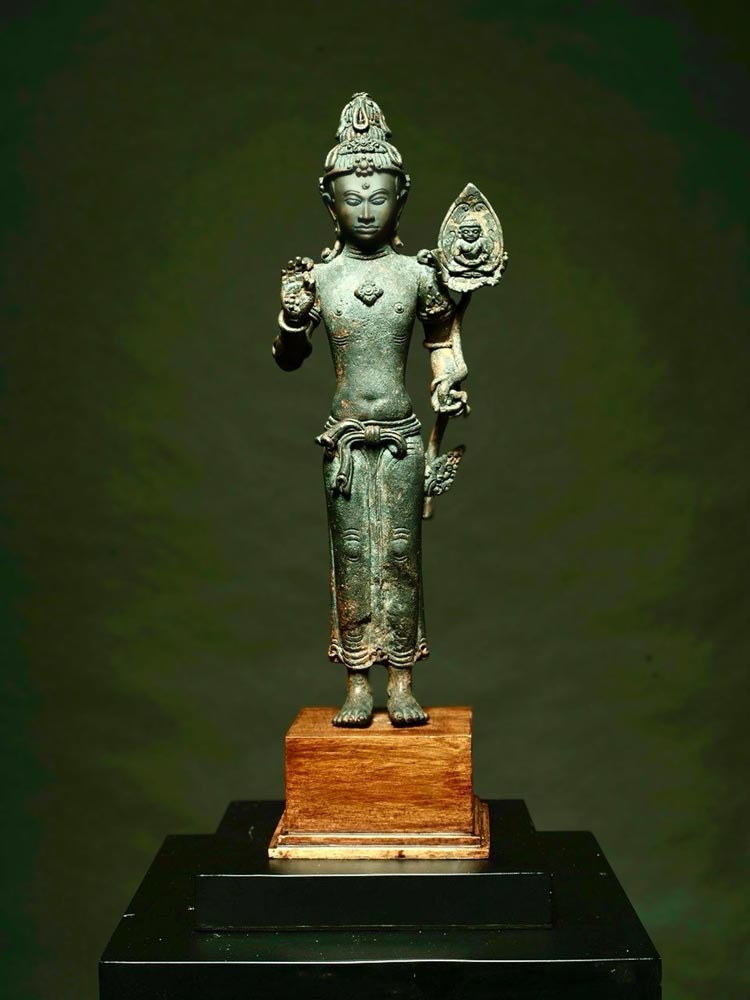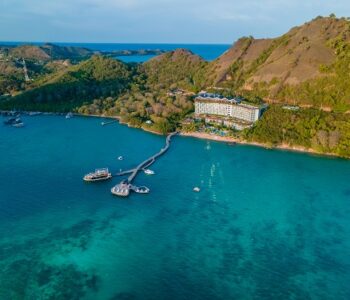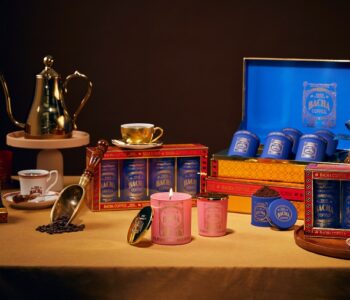
Many unique aspects of Indonesia’s cultural heritage remain relatively unknown to its citizens. Gaps in knowledge derived from archaeological research, translated into curated exhibitions of museum collections, conceal a myriad of historical accounts that distinguish Indonesia internationally. Since the beginning of the 1950s, countless exceptional Indonesian artworks and artefacts have left the country, finding homes within numerous private collections and museums worldwide.
Repatriating indigenous cultural heritage into Indonesia is the mission of German cultural connoisseur and curator Alexander Goetz and his initiative, Collection 101 Ubud. Collection 101 is Goetz’s private collection of Indonesian artefacts and contemporary art housed in Kemenuh, Ubud. The appointment-only venue, now sited near Goa Gajah above the Petanu River, with breathtaking views of flowing rapids and Mt. Agung, was first established in 2018 in Kerobokan and then relocated to Kemenuh in 2023.
Collection 101 showcases one of Bali’s finest curated art collections. “My wish is to inspire Indonesians to better appreciate their heritage and develop a stronger emotional engagement and love for the cultural riches of their country,” Goetz told NOW! Jakarta Magazine of his objective of repatriating Indonesian heritage from Europe and America into the country. Experienced in Southeast Asian antiquities, Goetz formerly directed a gallery in London for twenty-five years.

Collection 101 weaves a timeline narrative of how cultural and artistic technologies evolved within the archipelago from animistic/ancestor worship to the religious. History reveals that North Indian cultural roots spread into South Sumatra, while South Indian culture spread from Sri Lanka to Java, merging with the ancient past. Dedicated to displaying all periods of Indonesian culture, from the earliest pieces on display from 400 BC—200 AD to the contemporary art made today by emerging artists, Collection 101 has remained primarily anonymous, being one of the best-kept secrets on the island’s cultural map.
Featuring rare Bronze Age pieces and ritual implements from East Java dating from 400 BC – 200 AD, bronze figurines from the 6-9th centuries from Central Java and Central Sumatra, 13-16th century Majapahit era gold and bronze artefacts and jewellery from Central Java, tribal and primitive art from Sumatra, Flores and East Indonesia, Javanese contemporary terracotta pieces, Balinese and Indonesian contemporary paintings, Goetz’ contemporary art collection is a fusion of old masters, mid-career and emerging artists. The icons of Balinese art include Gusti Nyoman Lempad, Ketut Budiana and Denpasar innovator Gusti Made Deblog.


Right: Anadeo ancestor figure, Central Flores late 19th to early 20th century Heights 110 cm.
Images courtesy of Alexander Goetz
Born in Hameln, Germany, in 1946, Goetz’s father was a well-known painter, and his mother a writer and experimental photographer. His first love and profession was building wooden sailing boats, and he developed an appreciation for antique wood. He arrived in Bali in 1971, began collecting, and became involved in the Ubud art scene. He lived in Ubud with his wife and raised their family. In 1973, Goetz was sponsored by LIPI (Indonesian Institute of Science) to write reports on Balinese contemporary art.
In 1983, Goetz curated a landmark exhibition of contemporary Balinese art at Ubud’s Puri Lukisan Museum. The exhibition featured artists who became icons of Balinese art, especially Ketut Budiana, Gusti Ketut Kobot, Dewa Putu Mokoh, and Deblog. In 1987, Goetz moved to London, opening a gallery specialising in Southeast Asian art, with a focus on Indonesian art. He closed the gallery in 2015 after his wife passed away and returned to Indonesia.
“I have amassed arguably the most important collection of early bronze age artefacts created during the golden years of artistic development within the archipelago,” stated Goetz. “The creative excellence of the artists of the Bronze Age and the Buddhist and Hindu periods was not equalled during the later East Javanese Majapahit era, which was categorised by overly decorative architecture, jewellery and other creations.”



Images courtesy of Alexander Goetz
One of Goetz’s finest repatriation achievements is returning the most extensive ancient Indonesian gold collections to a collector in Indonesia. With the same energy, he endeavours to keep the last remaining significant Sumbanese textile collection in the country before it gets purchased and exported out of the country — a collection he has exhibited and catalogued. A Balinese and Indonesian contemporary art specialist, Goetz sponsors emerging talents and has supported artists since the mid-eighties. Collection 101 includes artists Made Djirna, Mangu Putra and Made Kaek.
”I continue sourcing Indonesian art objects in Europe and the U.S. and returning them to Bali. I hope Indonesians will love examining them and be willing to help preserve them within their country,” said Goetz. “I am eager to lobby an Indonesian corporation to safe keep the collection. I will help them curate exhibitions. I know the Southeast Asian network of experts who would be delighted to see these bronze works exhibited.”
“Unfortunately, Indonesian art and cultural heritage are only truly appreciated and embraced by a minority of Indonesians. I wish to help transform this scenario.”
Follow and contact directly on Instagram: @101_collections_





